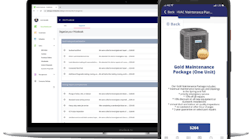Forecasting is essential — it's like brushing your teeth every day. Good forecasting takes a lot of work; many organizations that are very reactive think that forecasting activity is just a waste of time or a meaningless exercise because the future is anyone's guess. Having worked on Wall Street as a research analyst, it was my job to forecast performance well — to the penny even, on earnings per share. It can be done. It is a valuable skill.
Some organizations forecast once a year. Such organizations may even hold an elaborate offsite event to accomplish this activity. This is probably not frequent enough, given how fast business moves in the global marketplace today. Once-a-quarter forecasting holds advantages over annual forecasting because then, the organization gets four bites at the apple on an annual basis. Once-a-month forecasting is better still.
However, in considering forecasting activity once a day, organizations must have certain assets in play in order to take advantage of once-a-day or multiple-times-a-day forecasting. Companies that operate well in this situation tend to have strong reporting mechanisms whereby information on products sold — by SKU, vendor and quantity — are captured and transmitted to a central office to be analyzed. The technology exists. And yes, this is the realm of companies like Wal-Mart.
So why forecast? First, forecasting gives the organization a way to anticipate performance. The days of “build it and they will come” have withered in the face of competition in the global marketplace. Organizations must understand their customer bases in great detail.
Forecasting should be an organization-wide activity. Some organizations do forecasting only in the finance department. I have personally observed organizations that think forecasting is merely adding on a multiplier to last year's numbers. For example, forecasters might just apply a growth percentage, say 5 percent, to revenue and be done with it. This isn't a terribly meaningful way of forecasting because it doesn't really belie a true and in-depth understanding of the business at stake. In fact, the only meaningful choice made in this approach is to pick a growth percentage. Many times we choose this percentage by looking at the past and choosing a number based on averages. As previously stated, this approach is perhaps not terribly insightful or meaningful. Instead, the forecasting activity should include input from the business unit managers, with representation from sales and marketing, finance, human resources, operations and the like. This collaborative approach incorporates subject matter expertise from a diversity of business sources and results in a better forecast.
Forecasting also exists for benchmarking, which is another word for figuring out how it is that the enterprise is doing. How else would you know if you are doing well or not? Establishing a forecast creates accountability among all parties involved. If the numbers are not coming in as expected, benchmarking allows for strategic adjustment based on the additional information. For example, if you have a big customer that is having short-term difficulty and isn't buying, then you know the numbers may experience a short-term shortfall. In the short term then, it is incumbent upon the business managers to put effort into attempting to replace the anticipated lost revenue by acquiring another large customer, or a few smaller ones. Information is king because it allows for better decision-making.
Finally, forecasting is a living, breathing activity. Treating forecasting like a holiday toy that you play with once and then discard isn't likely to lead to productive results. Instead, a consistent approach to forecasting includes planned, collaborative activities that incorporate up-to-date information that lead to good decision-making and long-term success. Forecasting works best when the organization is committed to the process, but shouldn't be an exercise in planning just for planning's sake. There is an appropriate level of forecasting activity for each company, depending on resources, industry and size.
Eric Chen retired for the first time at the age of 30 after enjoying a career working in corporate finance, equity research, strategic consulting and venture capital, where he specialized in advising, financing and guiding the growth strategies of emerging growth companies. He was involved in transactions totaling more than $1 billion in aggregate value. He served as analyst, senior vice president and managing director for several Wall Street firms, including Furman Selz (now ING), Hambrecht & Quist (now JPMorgan Chase), Fechtor Detwiler (now Detwiler Mitchell) and Southeast Research Partners (now MidAtlantic Bank). He holds a JD from the University of Connecticut School of Law, an MBA and MS (Management) from Rensselaer Polytechnic Institute, an MS (Accounting and Taxation) from the University of Hartford, and an AB from Harvard University. He is an assistant professor of business administration at St. Joseph's College in East Hartford, CT. Contact him at [email protected].





